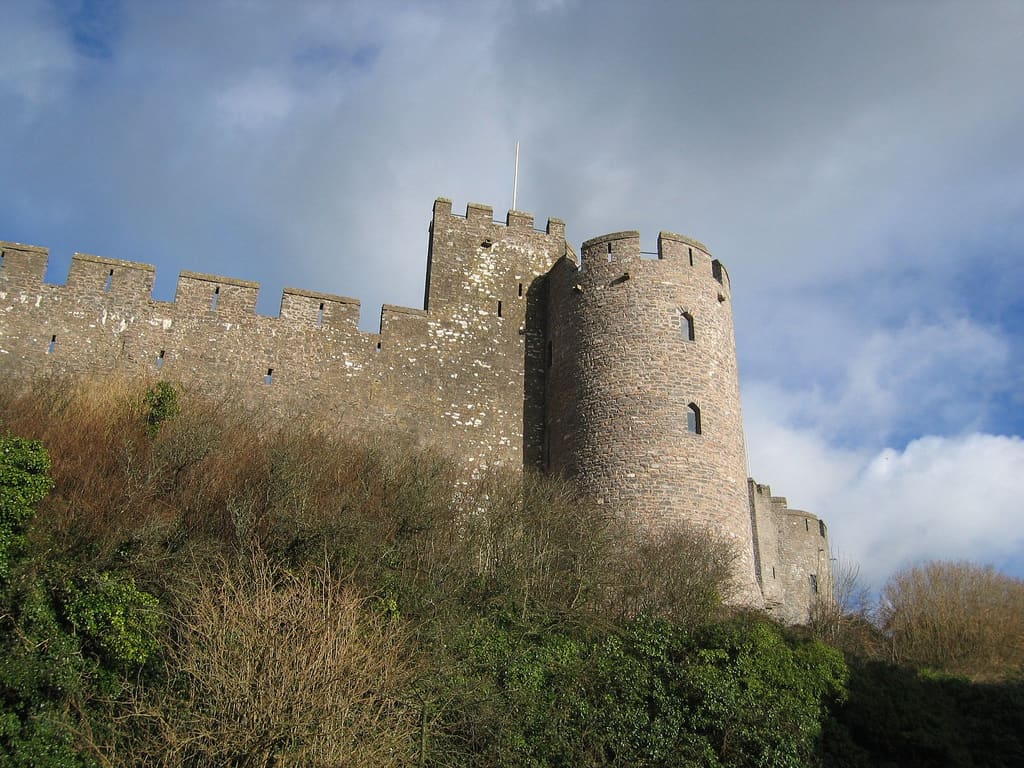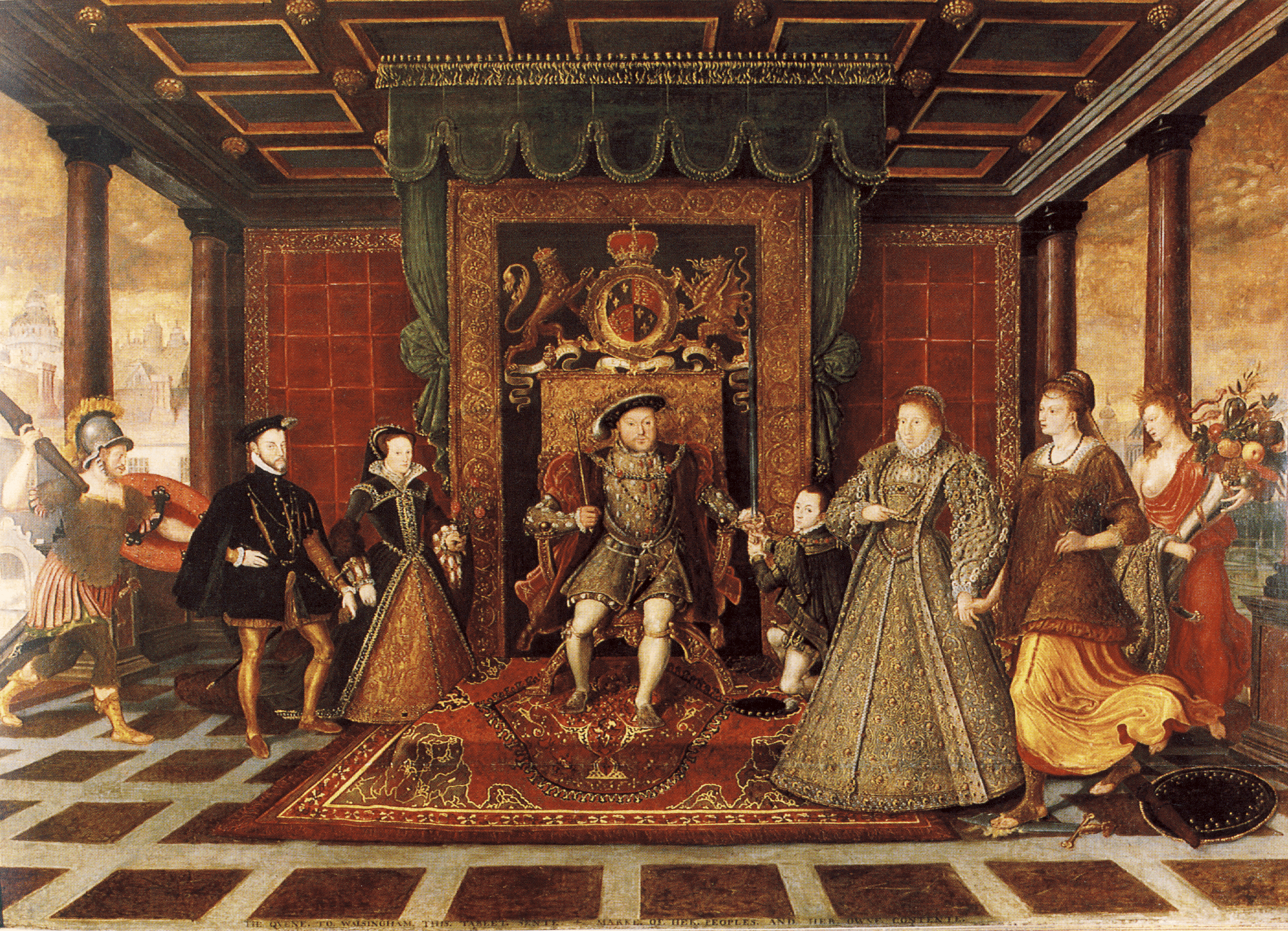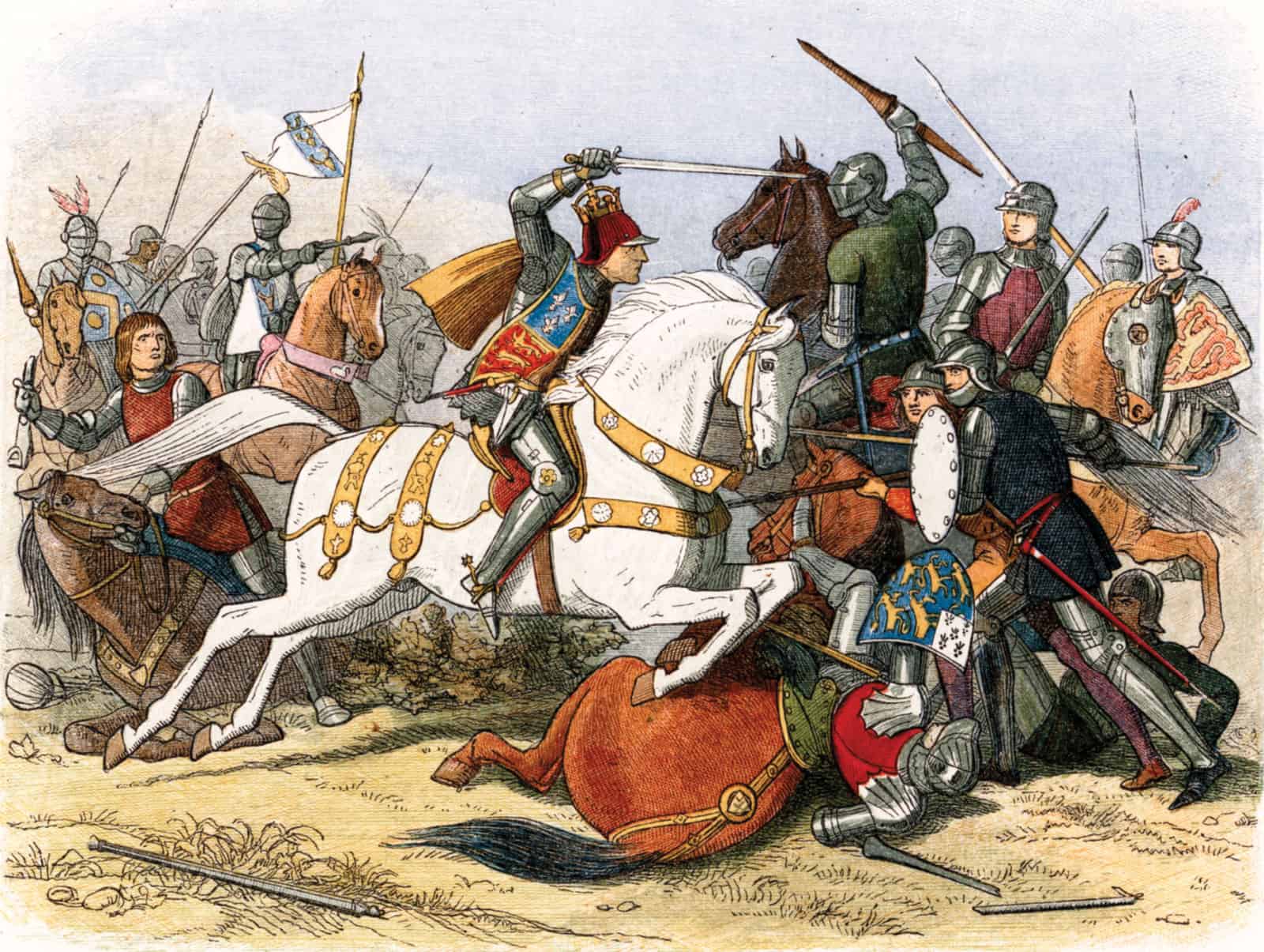Key Facts & Summary
- Henry Tudor usurped Richard III’s throne, and became King of England from August 22, 1485, until his death on April 21, 1509.
- He fought for the kingdom in the Battle of Bosworth.
- Henry VII is known as the diplomatic king that avoided wars at all cost.
- He was extremely Catholic and supported the Observant Franciscans. The king also carried out extensive work of charity.
Biography
Henry Tudor was the illegitimate son of the first Earl of Richmond, Edmund Tudor (son of dowager queen Catherine of Valois), and Lady Margaret Beaufort, a Welsh court servant. He was born in Pembroke Castle in Wales, on January 28, 1457. Through his mother, he could trace his descent from John of Gaunt, son of Edward III. In 1471, he was taken to Brittany by his uncle Jasper Tudor to protect him from the victorious Yorkists led by Edward IV (Pierce 1959). Henry’s attempted invasion of England in 1483, made to enforce his claim to the throne, failed, but in 1485, he defeated and killed Richard III at the battle of Bosworth.
After his coronation as the first king of the house of Tudor, he married Elizabeth, daughter of Edward IV, and so attracted the loyalty of many Yorkists.
Following his victory at Bosworth, Wales felt it had regained its independence (Pierce 1959).
Although Henry had to meet the revolts of Lambert Simnel and Perkin Warbeck, his reign proved successful in many ways. He brought the surviving nobles to heel, partly by vigorous use of the Star Chamber; he established order and security and so obtained the support of the rising middle and merchant class. He married his daughter Margaret to James IV, king of Scotland, and his son to Catherine of Aragon, thereby gaining increased recognition of his new dynasty; he kept peace and piled up a large financial reserve. Interested in the new learning, astute in diplomacy, he was an able if not too popular sovereign. He died in Richmond (in Surrey) on April 21, 1509.
The Battle of Bosworth
The Battle of Bosworth was carried out in Leicester on August 22, 1485: its contenders were King Richard III (belonging to the York dynasty), and Henry VII (belonging to the Tudor dynasty). Curiously, the battle was not actually fought in Bosworth Field: rather, it took place near the Market of Bosworth, and it is also known as the Battle of Redemore Field or Dadlington Field (Kramer 2018).
Henry VII was the first of the Tudors: he became the King of England after Richard III (belonging to the Plantagenets) lost his life in the War of the Roses (also known as the hundred year war). Richard III belonged to the York family, whereas Henry VII was part of the Lancaster family.
Throughout the War of the Roses, the two families fought against each other by employing their own private armies. However, also barons had a strong army, and they would offer their military forces to the family that offered and paid the most.
Henry VII was not as experienced a combatant as his opponent: in fact, he spent much of his life in exile between Wales and France where his uncle, John Tudor, took care of him and ‘fought along his side’ (Kramer 2018). Not only was Bosworth Henry VII’s first important battle, his troops were also inferior in number to Richard III’s. Whilst Richard III’s army was comprised of around 10,000-15,000 men, Henry’s forces were between 4,000-5,000 soldiers (Kramer 2018): these were French mercenaries, Welsh and English rebels (Knighton 2018). In fact, Richard’s had strong military skills and leadership qualities: in fact, following the death of his father, the Duke of York, Richard grew up with the Earl of Warwick, Richard Neville, who provided him with thorough military training since he ‘trained as a knight’ in the Earl’s castles (Kramer 2018). Moreover, Richard had also participated in other combats: for instance, he had fought in other battles of the War of the Roses including the ones in Barnet and Tewkesbury.
Henry VII’s first attempt to dethrone Richard III was not successful and was easily ‘put down’ because of the stormy weather in the West Country (Knighton 2018). However, the fate of the battle radically changed when Sir William Stanley and Sir Thomas Stanley supported Henry: in fact, since Thomas Stanley’s son was held hostage by Richard III, he sided with Henry VII by engaging his private army of six-thousand people. His man force was composed of ‘infantry carrying spears and billhooks’, as well as archers (Knighton 2018). On the other hand, Richard did not have much support from nobles and dukes: in fact, the Earl of Northumberland refused to engage his forces in the battle against Henry. At the end of the battle, as soon as Richard III’s crown was found on the ground of the battlefield by Lord Stanley, Henry VII was crowned. Thanks to his support, Sir Thomas Stanley was ensured the Earldom of Derby as soon as Henry was proclaimed king.
At the end of the battle, Richard III’s army endured a loss of one-thousand men (including Richard himself), whereas Henry’s army saw the death of two-hundred men.
Richard III’s dead body was transported to Leicester and ‘displayed as proof of his death’: he did not receive a dignified burial since he was deposed in the Church of the Greyfriars until 2013 (Battle Fields of Britain). In fact, up to 2013, it was not known were the king’s rests were: his body was found under one of Leicester’s carparks. Subsequently, he was interred in Leicester Cathedral.
Henry VII and Religion
During the reign of Henry VII, England was a Catholic nation, and also his son Henry VIII, continued along his father’s Catholic footsteps (in fact, although Henry VIII will be responsible for the Reformation in England, he nonetheless detested Protestantism, and had strong Catholic values).
Moreover, Henry Tudor’s faith becomes obvious at his death: the king had requested ten-thousand masses for his soul.
The king was above all interested in the Church’s wealth, and regarded it as a ‘source of revenue’: Henry VII also transferred several bishops from one dioceses to another ‘not [because] he had strong and shifting views as to which churchman should serve which diocese, but that the royal prerogative included ‘regalian rights’ over Church property’ (World History 2015). As a consequence, the king would receive revenues during episcopal vacancies.
Although the king took advantage of the Church as a source of income, his faith should not be underestimated: in fact, Henry was devoted to the Observant Franciscans: such branch of the Franciscans intended to promote the most rigid and strict rules of religious observance, and were devoted to St. Francis (World History 2015). It is claimed that Henry came across the Franciscan order when he was exiled in Brittany and in France.
The king founded two Observant Franciscan houses: one in Greenwich (1482), and one in Richmond (1500). Moreover, he encouraged already existing Franciscan orders to ‘adopt the Observant lifestyle’ (World History 2015). In his will he stated that at his death the Franciscan order would continue to receive cash donations.
The king was devout to the saints and partook in the ‘traditional pity’ of the Catholic religion. However, one of the greatest act of devotion to God was the creation of ‘a magnificent chantry chapel’ in Westminster Abbey (World History 2015).
Henry VII also financed the construction of the Savoy Hospital in order to help the poor people in London.
Henry VII and policies
Throughout his reign, Henry avoided wars and pursued a peaceful foreign policy. In fact, when in 1494 Europe was alarmed by Charles VIII’s invasion of Italy, Henry VII maintained his neutrality (Encyclopedia of World Biography 2004).
When Scotland invaded England the following year, Henry imposed a tax in order to cover the expenses of the army. Such a decision caused numerous riots and rebellions in Cornwall. However, the king assigned the military campaign against the Scots to the Earl of Surrey, Thomas Howard, who achieved successful results.
Henry also negotiated his children’s marriages in order to form strategic alliances: when he wed his daughter Margaret to the king of Scotland James IV, his intention was that of ending the ‘Auld Alliance’ between Scotland and France; moreover, when he arranged the marriage between princess dowager Catherine of Aragon and his son, Henry VIII, the king wanted to strengthen the contacts and peace between England and Spain (Encyclopedia of World Biography 2004).
Although Henry’s government was ‘medieval in its structure’, he nonetheless favoured investments in commerce and welcomed technological advancements in the construction of ships (the king also sponsored John Cabot’s expedition to America) (Encyclopedia of World Biography 2004).
Bibliography
[1.] World History (2015). Henry VII’s Religion. [online] Available from: https://www.worldhistory.biz/modern-history/86036-henry-vii-s-religion.html
[2.] Encyclopedia of World Biography (2004). Henry VII. The Gale Group Inc. [online] Available from: https://www.encyclopedia.com/people/history/british-and-irish-history-biographies/henry-vii
Image sources:
[1.] https://upload.wikimedia.org/wikipedia/commons/5/58/Warwick_Castle_-_Caesar%27s_Tower_2016.jpg
[2.] https://c2.staticflickr.com/4/3486/3716455379_29afc3e721_b.jpg
[4.] https://upload.wikimedia.org/wikipedia/commons/e/eb/James_Doyle%27s_Battle_of_Bosworth.jpg



